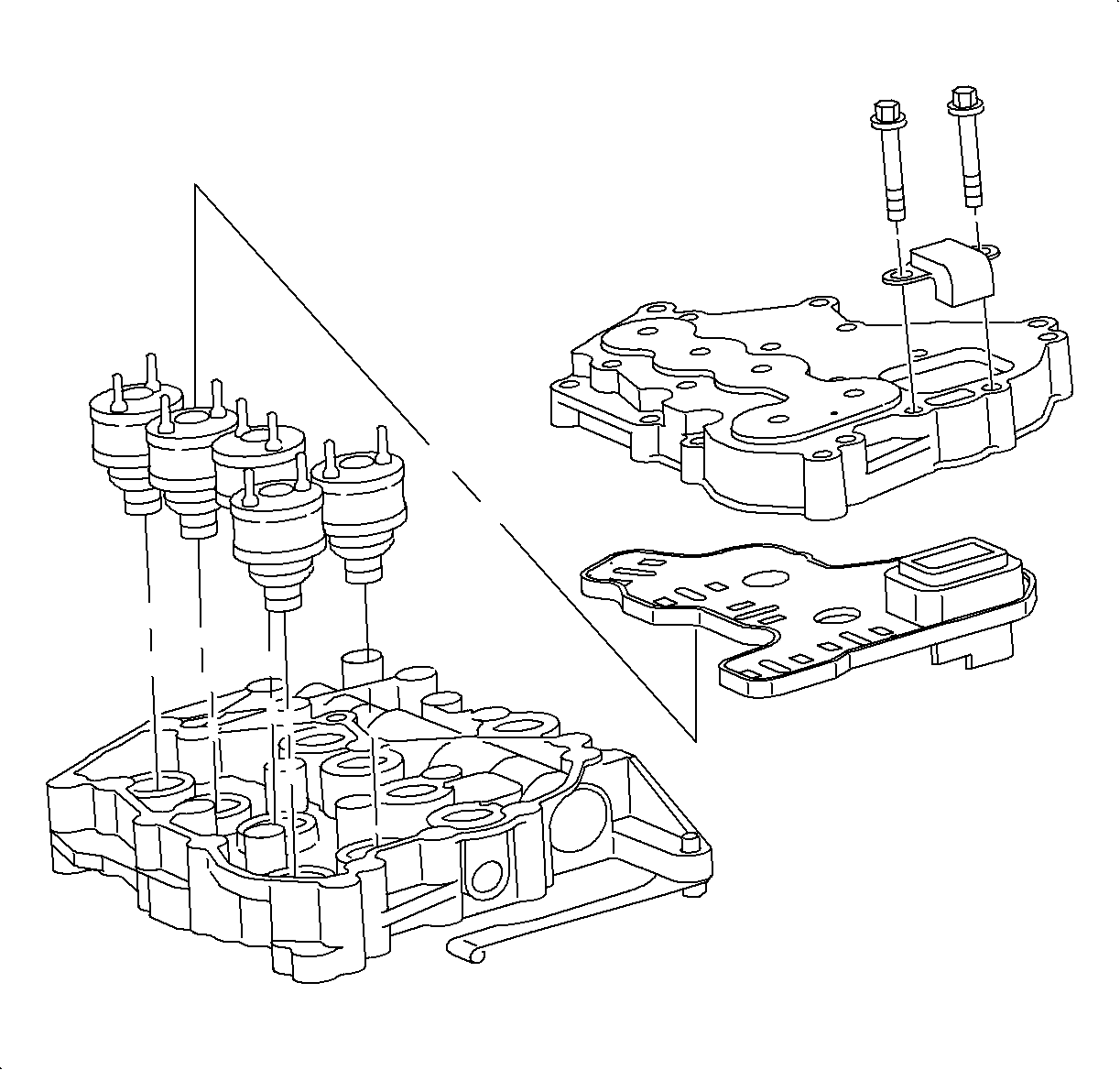
Caution: Take care when removing line pressure regulator valve. The pressure regulator
cushion spring and valve spring have a tendency to shoot-out, resulting in potential
injury.
Important: The valvebody should only be disassembled
if directed by the diagnostic charts or if the transaxle is being overhauled. Care
must be taken when removing valvebody valves as these valves are not serviced separately.
Whenever the valvebody is disassembled, new spacer plate gaskets must be installed.
- Remove the solenoid cover-to-valvebody bolts and remove the solenoid cover.
- Lift the solenoid connector plate off the solenoid valve pins using care
not to damage the connector plate.
Important: Note the position of the solenoid valves
before removing.
- Remove the solenoid valves by using a twisting motion.
Important: Note the ball check valve positions when
taking the 2 halves apart.
- Remove the bolt retaining the 2 halves of the valvebody.
- Remove the detent arm on the upper valvebody before removing the line
pressure regulator valve.
- Remove the valves from the upper and lower valvebody halves.
| • | Valve stuck or sticking in bore |
| • | Irregular gasket surfaces on machined face of valve body |
| • | Cracked housing in or around fluid passages |
| • | Spacer plate damaged warped, scored, holes elongated |
| • | Valve or housing bore scored |
| • | Broken or collapsed springs |
| • | O-rings damaged, on valves |
| • | Valve assemblies incorrectly installed, valve installed in wrong order,
valve installed in wrong direction, valve installed in wrong bore |
| • | Poor connection at connector plate |
- The valvebody must be replaced if the valves cannot be freed up by cleaning,
or if the valves or housing are damaged. If there is no apparent damage to the valves
or housing, then it should be cleaned and reassembled. Make sure the valves move freely
in their respective bores after cleaning and reassembly. Under no circumstances should
you attempt to debur valves. Also, never use emery cloth or crocus cloth to polish
or repair a valve or housing bore. The abrasive material on cloths will damage surface
finish of the valves and the valvebody.

